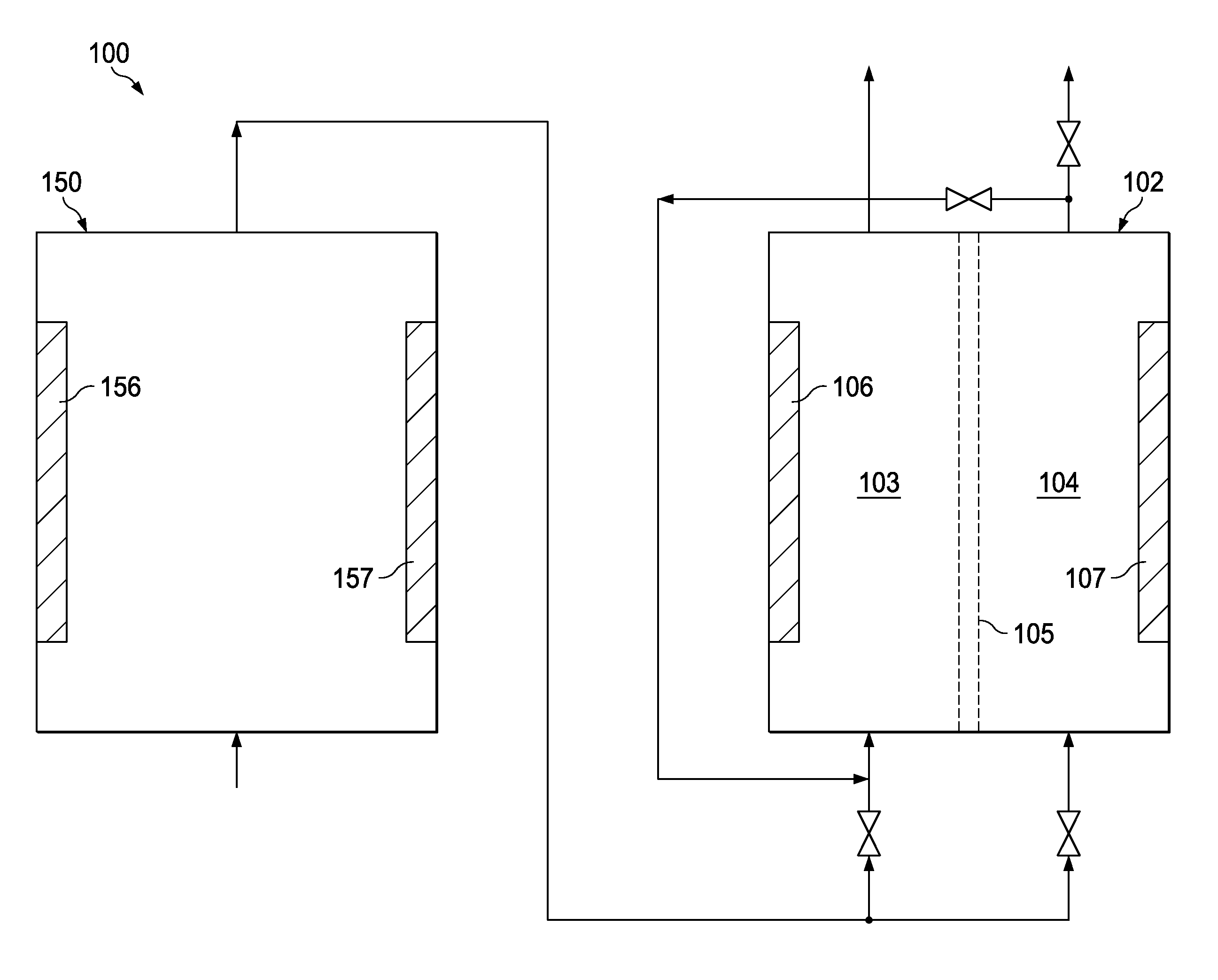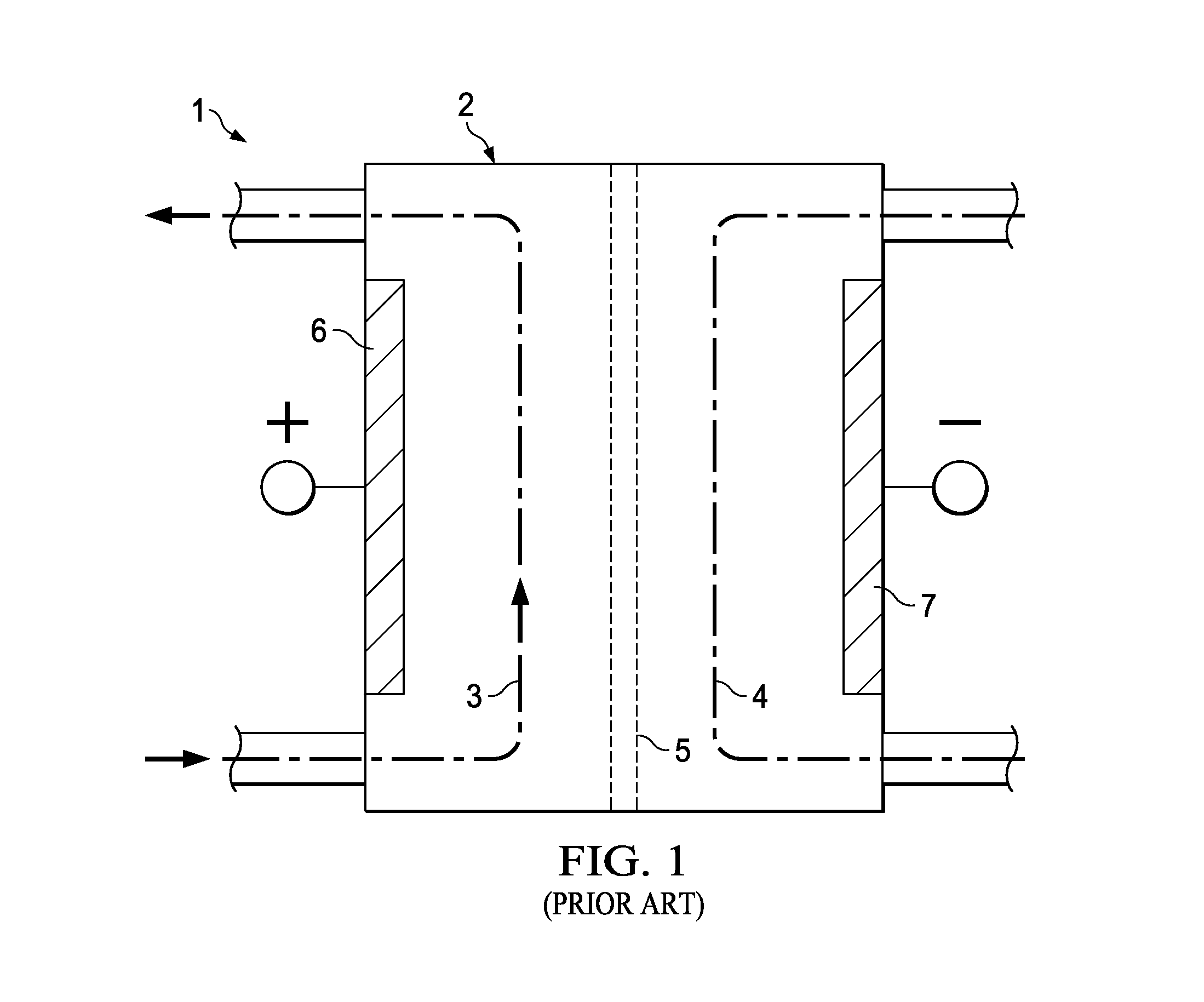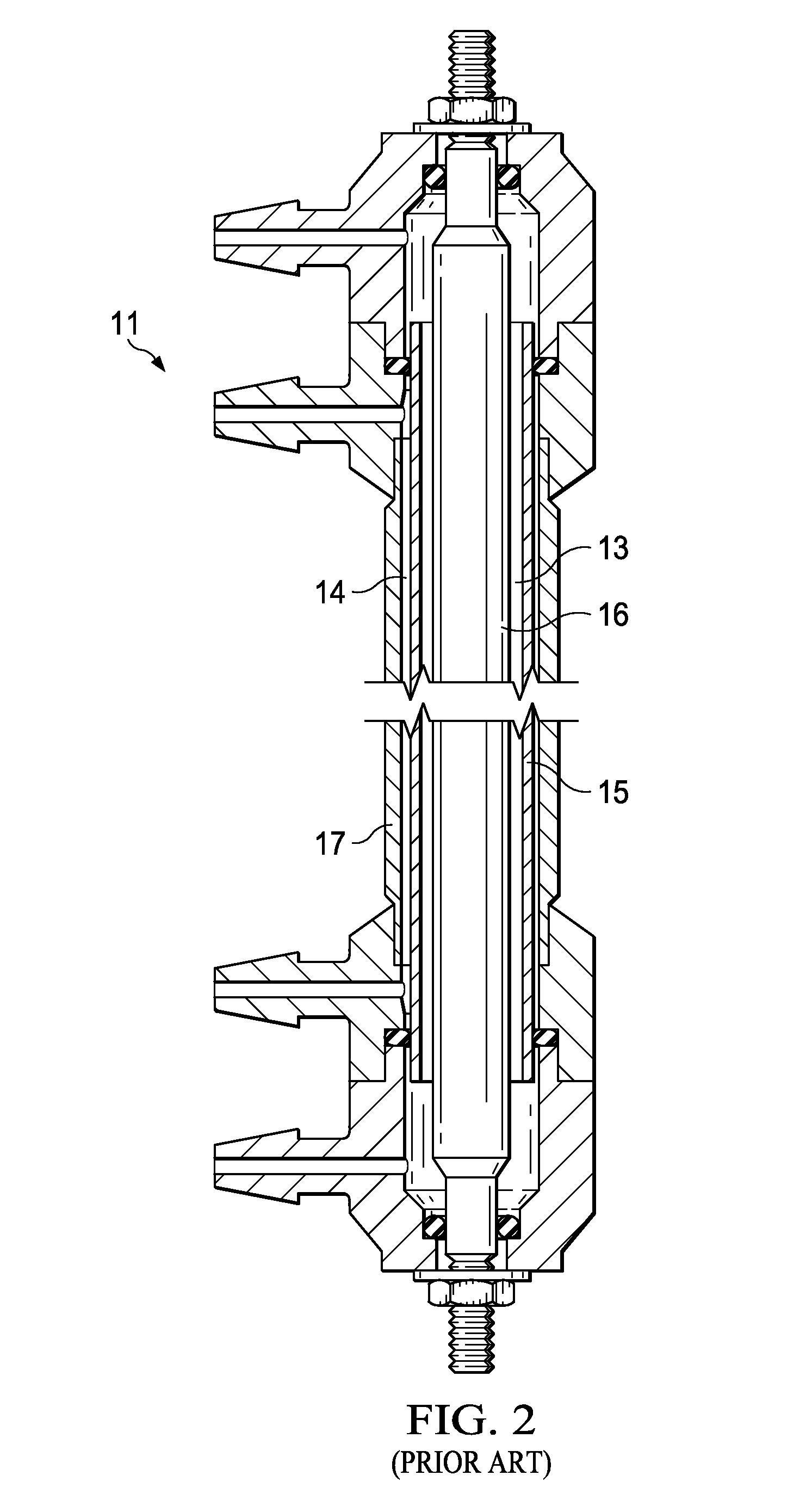Method for electro-chemical activation of water
a technology of electrochemical activation and water, which is applied in the direction of water/sewage treatment using germicide/oligodynamic process, chemical apparatus and processes, water/sludge/sewage treatment, etc. it can solve the problem that little or substantially none of the catholyte product can be independently harvested for other uses, and the toxicity level of the product is increased. problem, to achieve the effect of reducing the amount of salt used in the dilute brine feed solution, reducing the residual chloride level level
- Summary
- Abstract
- Description
- Claims
- Application Information
AI Technical Summary
Benefits of technology
Problems solved by technology
Method used
Image
Examples
example 1
[0066]Tests were conducted which involved passing a dilute aqueous brine solution through a modified cylindrical “pre-activation” reactor prior to activating the solution in an unmodified cylindrical reactor cell. The modified pre-activiation reactor comprised an inner anode and outer cathode having the same specifications as used for a regular cylindrical reactor cell, except that the ceramic membrane was removed from between the anode and cathode in the modified cell.
[0067]In the tests, two such modified “pre-activation” reactors were used and two unmodified “activation” reactors of the same type were used, each one of the modified reactors being installed in series prior to one of the unmodified reactors.
[0068]In preliminary tests, the intermediate solution exiting the modified, pre-activation reactors had a relatively high pH of above 8.0 indicating that a mixed oxidant solution was created with hypochlorite being the main component. The intermediate solution had a FAC concentra...
example 2
[0077]An inventive, industrial scale activation system was operated using a dilute aqueous feed solution consisting of 0.7 grams of NaCl per liter of water. The source water used for forming the dilute aqueous feed solution was deionized water which had a chloride content of 10-12 ppm. The inventive activation system comprised a preliminary reactor 150 as illustrated in FIG. 4 followed by a block of 12 cylindrical activation reactors of the type illustrated in FIG. 2 operating in parallel. As shown in FIG. 4, the preliminary reactor 150 comprised a block housing 155 having twelve anode plates 156 and twelve cathode plates 157 installed therein in an alternating, parallel, side-by-side relationship with no membrane elements being present in the preliminary reactor 150 between any of the adjacent pairs of anode plates 156 and cathode plates 157.
[0078]The undiluted anolyte product produced by the inventive system had a pH of 6.8, a residual chloride content of 350 ppm by weight, a free...
PUM
| Property | Measurement | Unit |
|---|---|---|
| oxidation-reduction potential | aaaaa | aaaaa |
| pH | aaaaa | aaaaa |
| oxidation-reduction potential | aaaaa | aaaaa |
Abstract
Description
Claims
Application Information
 Login to View More
Login to View More - R&D
- Intellectual Property
- Life Sciences
- Materials
- Tech Scout
- Unparalleled Data Quality
- Higher Quality Content
- 60% Fewer Hallucinations
Browse by: Latest US Patents, China's latest patents, Technical Efficacy Thesaurus, Application Domain, Technology Topic, Popular Technical Reports.
© 2025 PatSnap. All rights reserved.Legal|Privacy policy|Modern Slavery Act Transparency Statement|Sitemap|About US| Contact US: help@patsnap.com



